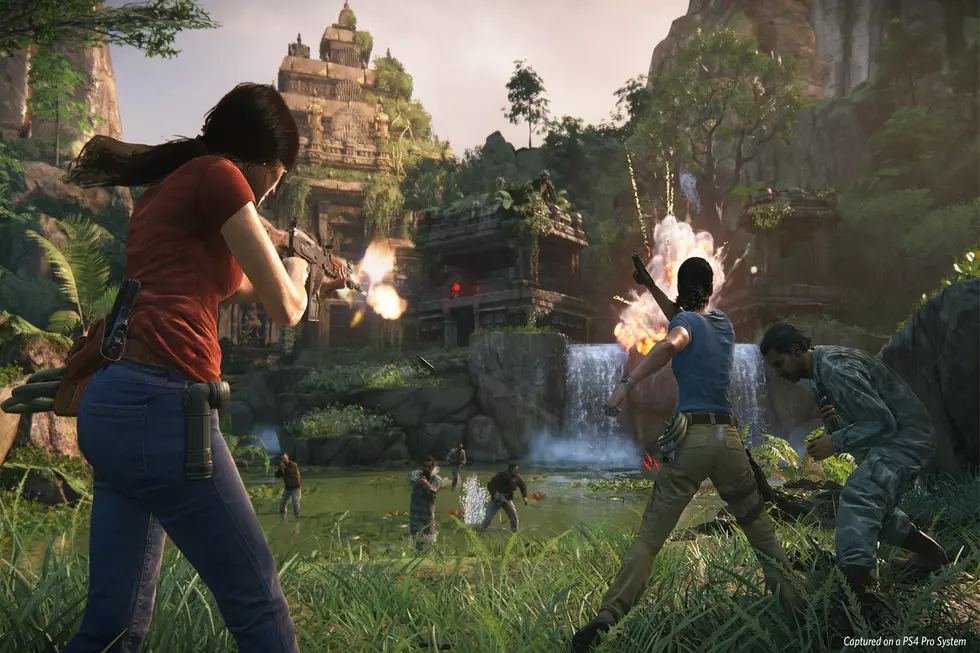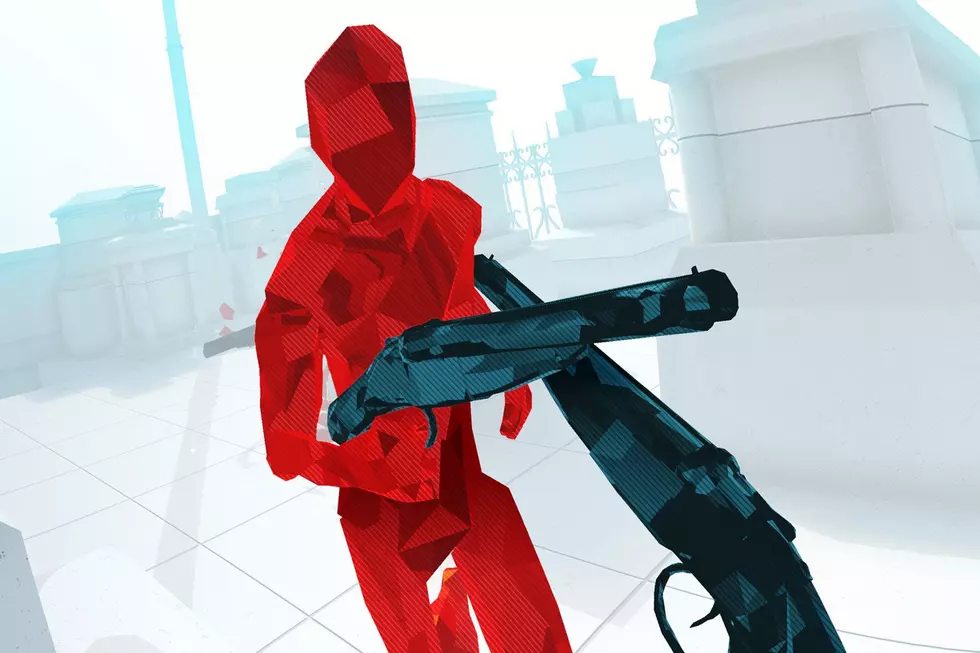
Far Cry Primal Review (PlayStation 4)
Far Cry Primal takes place in 10,000 BCE, thousands of years before modern music was even conceived, but I still expected Led Zeppelin’s “Immigrant Song” to come bursting on during the mammoth hunting intro in true Far Cry fashion. Licensed music aside, Far Cry Primal is still very much a Far Cry game. Taking over outposts and enemy camps, finding bonfires to uncover more of the map and gathering crafting items, it’s all here. Far Cry Primal seeks to put you in the shoes, or rather, hunting furs of a primitive human trying to survive and secure a place for his people, but it seems to get in its own way at the worst times.
Far Cry Primal is beautiful. Walking around the redwood forests and seeing the sun peek through the trees to light up the oxygen-rich air immerses you in a way that only Far Cry games have done in the past. Oros is packed full of wildlife and varied environments that come together to create a wonderfully detailed world. The environments don’t feel like just another large wooded or mountainous area with a few ponds or rivers here or there. The sun shines a bit brighter, the water is a bit clearer, the snowy peaks are a bit more inhospitable.
Everything in Far Cry Primal goes out of its way to nail the primitive caveman aesthetic and it works. The world feels more alive thanks to the abundant flora and fauna and much more random NPC placement. You’ll find your own tribespeople out in the wild, as well as enemy tribes, much more often. Friend or foe, most NPCs found out in the world are just trying to survive, whether it’s hunting packs of deer or fending off predators.
Survival is the main concern for Takkar, the main character or Far Cry Primal. Takkar is a Wenja tribesman that finds himself in the promised land of Oros almost by accident after fleeing a saber-toothed tiger. Takkar tasks himself with finding any remaining Wenja and building a society in this new fertile land. Soon you’ll find that there are other tribes with the same idea. After being attacked in his own village, Takkar ventures to spread the Wenja people all throughout Oros and eliminate the other tribes. If the plot sounds simple that’s because it is. The plot is simply describing the mechanics of a Far Cry game. Take over the map, and kill your enemies. That’s it.
The narrative here is painfully simple, and although it makes sense in this world, it still feels lacking. Characters speak a language created for this game so subtitles are mandatory. The dialogue reads very primitively but it is very inconsistent. Where one moment a character will say “me do this, you go there, kill Udam” the next moment they’ll express more complex ideas and drop the “Me Tarzan” type of speech. This makes a lot of the dialogue in cutscenes feel choppy and leans too much on stereotypical caveman conversation.
The rich, vibrant world combined with the moment-to-moment concern of survival really puts you in a survivalist mindset though. However much Far Cry games had you manage ammo, materials or resources, Primal will have you do it ten times more. You’ll constantly look around to make sure the path ahead is safe to travel, both from predators and people. It may be giving this game a bit too much credit, but all of these elements acting together put you in a position that makes you ask, “Why do I kill things?” In this game, it’s to survive. You stalk and kill prey to stock up on meat to heal yourself and your animal companion. You kill predators and NPCs before they kill you in order to continue your journey. This feeling of survival persists through most scenarios in the game, until Primal’s mechanics get in your way.
Far Cry games, at least from Far Cry 2 onward, placed an emphasis on crafting. Usually it’s skinning animals to craft bigger ammo bags or wallets or gathering plants to make healing or boosting items. Far Cry Primal cranked the crafting meter up to 11. Almost everything in the game required some type of crafting. Weapons, consumables, tools and even story progression were tied to gathering up the right resources out the world. Some of this is mitigated by a daily reward of items to keep you from running out of basic crafting materials, but the majority of items still require you to go out and hunt them down.
There’s no form of currency in the game due to the vastly increased types of materials in the world. Usually these types of things don’t get in the way since previous ihave made crafting mostly optional, but beneficial later on in the game. Primal forces you to build and upgrade huts for important villagers in order to progress the story, which means you’ll be spending a long time gathering resources. This makes gameplay feel more stop-start and it flows less smoothly as in previous entries.
Where Far Cry Primal doubles down on crafting it drastically simplifies combat. Outside of the bow, all other weapons are completely new and change the way combat works compared to previous, more modern entries. New melee focused weapons, combined with the Beastmaster mechanic, make combat feel better than it ever has in a Far Cry title. Combat is much more violent as you’re bashing people with a club and throwing spears through enemies. Stealthy approaches are just as valid as just rushing in swinging your club, and it’s all equally satisfying. Employing your wolf or saber-tooth tiger companion is also a great addition to combat and feels like more than a way of making up for the lack of guns.
The animal AI is great at sticking to whatever plan of action you’re using. It’s always a nice surprise when you’re sneaking around an outpost, taking out guards quietly and your bear companion is slowly sneaking alongside you. The Beastmaster mechanics are easily the best addition to the Far Cry formula and is some of the most fun you’ll have in this game. The first time you tame and befriend an animal in the heat of combat, and turn the tide of battle, you’ll be completely on board.
Far Cry Primal is an incredibly interesting game that really nails the feeling of danger and survival at times. The game’s nearly non-existent, thin plot and tedious crafting system however hold it back from being great. Primal isn’t as heady or political as other Far Cry games, mostly due to the source material, but it does a good job at asking the player, “Why do you play Far Cry?” If it’s for the side quests, crafting, and earning every single upgrade, then Primal is the game for you. There’s no denying that there are great systems at work here though; the combat is fantastic and Oros is one of the best open worlds in the series. Even with that in mind, Far Cry Primal still ends up feeling like a large mess of side quests that don’t really add up to anything meaningful.
This review was completed with a purchased retail copy of Far Cry Primal for
More From Arcade Sushi









